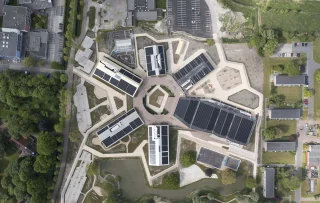Architects Title Act
The Architects' Title Act recognizes the four professional titles: interior architect, architect, garden and landscape architect and urban planner - according to European guidelines
On October 1, 1988, the law went into effect. This law (NL) regulates a system of title protection by establishing a register of architects. The system of title protection means that only those who are registered in the Register of Architects as interior architects, architects, garden and landscape architects or urban designers may use the relevant title.
Nadere Regeling
The Nadere Regeling (NL) lists the minimum training requirements and here you will also find an overview of Dutch courses that meet these requirements.
Regulation on the Professional Practice Experience
The Regulation on the Professional Practice Experience (NL) describes how the professional experience period must lead to, among other things, the required level of knowledge, insight and skills. It contains the 24 endterms that participants must meet.
Erkenningsregeling Beroepservaringperiode
In de Erkenningsregeling Beroepservaringperiode is de erkenning van aanbieders van een geïntegreerd beroepservaringprogramma of beroepservaringmodules door het Architectenregister geregeld.
Protected use of the title
Only those registered with the Architects' Register have the right to hold the title of architect
Professional qualifications
The Architects' Title Act implements, for the four protected professional titles, the European Directive on the Recognition of Professional Qualifications. The articles of this Directive describe the minimum training requirements for the discipline of architecture. In Annex V, under 5.7.1, of the Directive and in Annex VI it is stated which architectural diplomas meet these requirements and, possibly in combination with which required supplementary certificate, give the right to automatic recognition and the right to be entered in the register. In addition, there are currently treaties with Switzerland, Norway, Iceland and Liechtenstein. The treaties specify, for the countries mentioned, which architectural diplomas meet the minimum training requirements and should therefore be recognized automatically, with or without a required additional certificate. If an educational qualification is not listed in Annex V or VI or the treaties, a request for recognition must be handled according to the general recognition system of the European Directive. This general system has been elaborated for the Netherlands in the General Act on Recognition of EU Professional Qualifications. If it concerns qualifications obtained in a 'third country', i.e. not another EU member state or Switzerland, Norway, Iceland or Liechtenstein, the training requirements as specified in the Further Regulations will be assessed for recognition. It should be noted that the European Union is currently negotiating with Canada and the United Kingdom to reach recognition agreements with these countries. Thus, different requirements will probably soon apply to these countries.
The Architects' Register is the "competent authority" for the implementation of the Act under Directive 2005/36/EC (see Article 3 of the Act).



